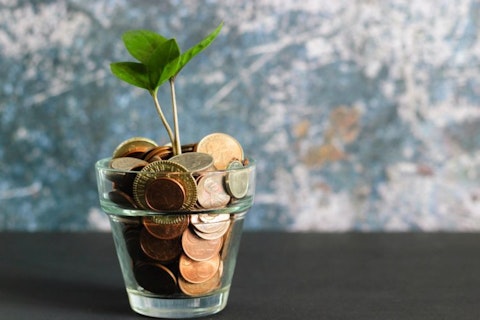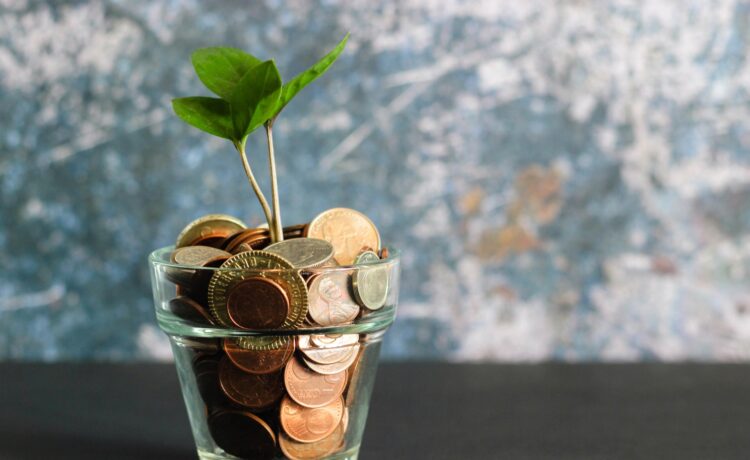With another year of uncertainty looming, a tried-and-true emergency fund has never been more important.
Word on the Street suggests tentative confidence in a soft landing, but outliers exist. Some cautiously optimistic economists point to the S&P 500 Index’s miraculous rebound as proof that a bullish run is set for 2024.
Other, more pessimistic analysts believe a hard landing is more likely, listing ongoing inflation woes, fed rate cuts, and upcoming elections in half the global economy as red flags. (The Biden-Trump rematch is only one of 40 elections scheduled in 2024).
No such clash of opinion exists in the financial world when it comes to emergency funds. The emergency fund has always been and always will be the cornerstone of good money management.
Above all else, it’s the first-time investor’s greatest need. Unfortunately, few people have this essential financial safety net.

micheile-henderson-ZVprbBmT8QA-unsplash
More Than Half of Americans Don’t Have Emergency Savings
An unexpected $1,000 expense would stump more than half of adults in the US. That’s according to a new Bankrate survey, which shows 56% of Americans don’t have $1,000 set aside in savings.
The bulk of these cash-strapped individuals, roughly 35%, would have to borrow money to handle an expense of this size.
- Among them, 21% would reach for their credit cards, drawing against available credit and paying the emergency expenses over time.
- Another 10% would ask for help from loved ones, borrowing personal loans from the Bank of Friends and Family.
- A scant 4% would attempt personal loans with banks, direct online lenders, and credit unions.
The Post-Pandemic Landscape: Fewer Savings, More Debt
New data from the Federal Reserve paints a similar picture of the state of savings. It shows a whopping 80% of Americans have less cash in reserve than before the start of the pandemic. Bank deposits and other liquid assets have plummeted with low-income individuals taking the brunt of this plunge.
Without sufficient savings, the number of Americans relying on credit cards and personal loans has increased. Both delinquencies and credit card debt have surpassed pre-pandemic levels, with more than one-third of Americans having collected more credit card debt than savings.
Today, the average American owes $59,580 in debt, according to the Federal Reserve. This sizeable debt load makes it harder to make ends meet, let alone invest in a strong portfolio.
Why Emergency Cash Reserves Come Before Investing
Given that investing is the single best way to build wealth, it’s understandable you may skip an emergency fund in favor of getting cash into stocks or bonds. A diversified portfolio puts your money to work, capitalizing on higher rates of return to grow your reserves over time.
However, you may regret investing the cash that would otherwise build an emergency fund. Remember that analysts are largely unsure what stocks will do in the upcoming year. While historical evidence shows stocks almost always increase over time, they may suffer drastic ups and downs along the way.
Similarly, you can’t predict when an emergency will crash land in your life; it can happen at the worst time for the markets.
Due to the nature of emergencies, you can’t strategically time your withdrawals to maximize your return. You risk having to cash out long before you see your investments grow to their full potential. Even worse — your funds may be worth significantly less if you are forced to withdraw during a downturn.
Prioritizing an emergency fund before your portfolio lessens this risk. Although financial advisors recommend you aim eventually for three to six months of living expenses in your fund, the amount you need depends on your situation. Even $1,000 in a savings account can help you field an emergency without taking out a personal loan.
Establishing some cash reserves for an emergency also protects your portfolio once you do start investing. With savings set aside for a rainy day, you can tap this cash before withdrawing from your investments. You may never have to unload at all if you hit the recommended three-to-six-month savings goal, giving your investments their full opportunity to grow.
Finding Ways to Put Your Emergency Fund First
With such a large goal, you will need to sit down with your budget to identify non-essential spending. You can convert unnecessary subscriptions, services, or splurges into savings that boost your emergency fund.
You should also address your debt. While some financial advisors recommend paying off all debt before you invest, others suggest you calculate your return on investment against your cost of borrowing.
High-cost credit cards and lines of credit accrue interest if you don’t pay them off quickly, so paying off high-interest debt is important. No rate of return will ever outmatch a high APR. Some high-cost loans are as high as 300% APR, while the average stock market return is around 10% per year. If left unaddressed, compounding interest can add to your debt, tying up your paycheck and reducing what you can put towards investments.
You may also need to consider a new job in the face of the cost-of-living crisis, as prices rise faster than wages. Injecting your budget with more money makes it easier to balance multiple financial goals, like padding out an emergency fund and building a portfolio simultaneously.
Although upgrading your salary may be harder than adjusting your budget, this goal promises to give your saving power a greater boost than cancelling Netflix or Spotify. Take some time to explore opportunities to network, volunteer, or train — taking these steps sets the wheels in motion, letting you know what you must do to climb the corporate ladder and get a better-paying job down the road.
Things to Do After You Establish an Emergency Fund
Once you have some cash reserves for emergencies, and you have a handle on your high-interest debt, it’s time to think about your investment goals.
Full disclosure: even with an emergency fund, you face some risks investing in the markets at a time like this. You can mitigate these risks by making informed decisions about managing your portfolio in a volatile market.
Before making these decisions, you need to set boundaries — either on your own or with the help of a professional.
Here’s how:
- Identify your financial goals within the short- and long-term.
- Recognize your risk tolerance. All investing comes with risk; you need to decide whether you can handle the biggest risk (i.e., losing all your money) to reap the biggest reward (a higher return). You can choose more conservative options if this is out of your comfort zone.
- Compare asset allocation to your goals. Different allocations can support different goals.
- Strive to diversify. By choosing a group of varied investments, you might weather economic storms that affect one class or industry more than others.
- Take advantage of any employer-sponsored retirement plans where your employer matches your contributions.
The Takeaway:
While investing may be the single best way to grow your wealth, saving an emergency fund is the greatest way to protect it. After all, you can tap into these reserves to cover an emergency without borrowing personal loans or withdrawing investments at an inopportune time.
With market uncertainties looming, now is the perfect time to focus on your emergency fund. These savings provide the foundation of a strong investment plan.
















